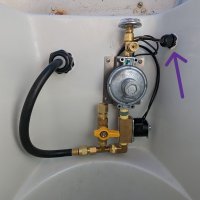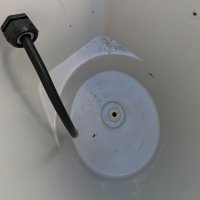Prairie Schooner is right. A "normal BBQ grill tank" holds 20# of propane. Many of us have a factory-built propane locker which does not have the diameter capacity for a 20# tank. My own boat, 1987 32-3, can hold either of the two tanks I mentioned, one of which is steel and the other is aluminum. Trade-off considerations are tank weight, propane capacity, purchase cost, and corrosion issues. I expect any tank marketed or refillable for propane will be DOT approved, and expected to have been pressure tested within the allowed period.
Worthington Enterprises manufactures many different size tanks in both steel and aluminum.
If your propane locker can hold a 20# tank, go for it. Any place that can refill a tank, versus swap full for empty, should be able to refill any refillable tank. One-pound tanks are not refillable. I generally take mine to a local agriculture and garden supply store for refill.
Be aware that a propane locker on a boat should be sealed when closed, and should have a gravity drain to atmosphere above the boat's waterline, among other requirements. Cutting corners in installation and maintenance of propane systems on boats has resulted in some spectacular explosions.



